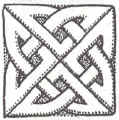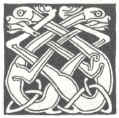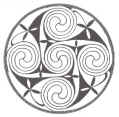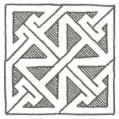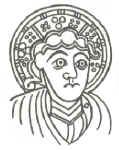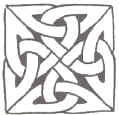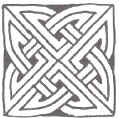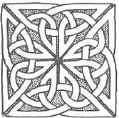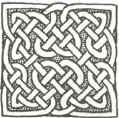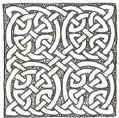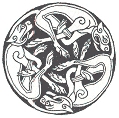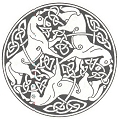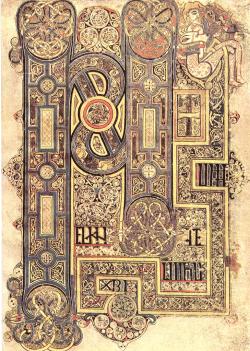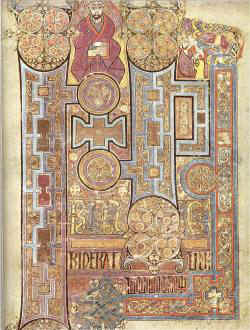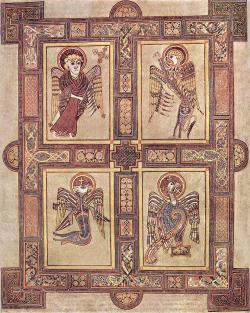|
The Book of Kells, a record of the Gospels is perhaps the crowning glory of
the Celtic art form, consisting of some 340 calfskin leaves featuring
elaborate illustrations and Latin calligraphy and thought to have been
prepared anytime between the middle 6th century to possibly as late as the
9th century AD. It may have been started by the monks of the island of Iona
then moved to the Columban monastery of Kells, County Meath in Ireland to
stop it falling into the hands of invading Vikings. Wherever it originated,
it is estimated that it may have taken a small team of illustrators up to 30
years to complete. Although it is not the only manuscript book that is known
to have existed, others including the Books of Durrow, Lindisfarne, St.
Chad, MacRegol and MacDurnan survive in whole or partial form, it is
generally regarded as the most accomplished and contains examples of almost
all of the various forms and styles of Celtic art known to the scribes and
artists of the time.
The page above shows the Initial page of St. Marks Gospel and illustrates
the text 'Initium Evangelii Ihu Xpi' meaning 'The beginning of the
Gospel of Jesus Christ'.
|
|
Although there are 340 leaves
remaining, it is thought that some 30 have been lost throughout the books
1100 -1400 year history, indeed it was stolen in 1007 and its golden cover
was never found. It finally passed into Trinity College Dublin in 1661
where it has remained since. However it seems that each Gospel was to be
introduced with 3 decorative pages, a page illustrating the symbols of the
evangelists with another showing the individual saint and an Initial page
with the highly ornate opening words of the Gospel. Throughout the book
there are further full pages illustrating important events in the life of
Christ.
The Initial page of St. John's Gospel is shown above and contains the text
'In Principio erat Verbum et Verbum' meaning 'In the beginning was
the Word and the Word...'
|
|
The book of Kells contains three
Evangelists pages and it is probable that there was once a fourth. These
show four winged forms with halos - the symbols traditionally associated with Matthew, Mark, Luke and
John. In the Book of Revelations, they are described thus 'and around
the throne were four beasts...and the first beast was like a lion, and the
second beast like a calf, and the third beast had a face as a man, and the
fourth beast was like a flying eagle.' The lion represents Mark, the
calf Luke, the man is Matthew and the eagle is attributed to John.
One theory suggests that the symbols are related to the life of Christ, it
claims that the man symbolises the Nativity, the lion shows His royalty
and majesty, the calf, as a sacrificial animal represents His sacrifice on
the cross, and the eagle His ascending to Heaven.
|
